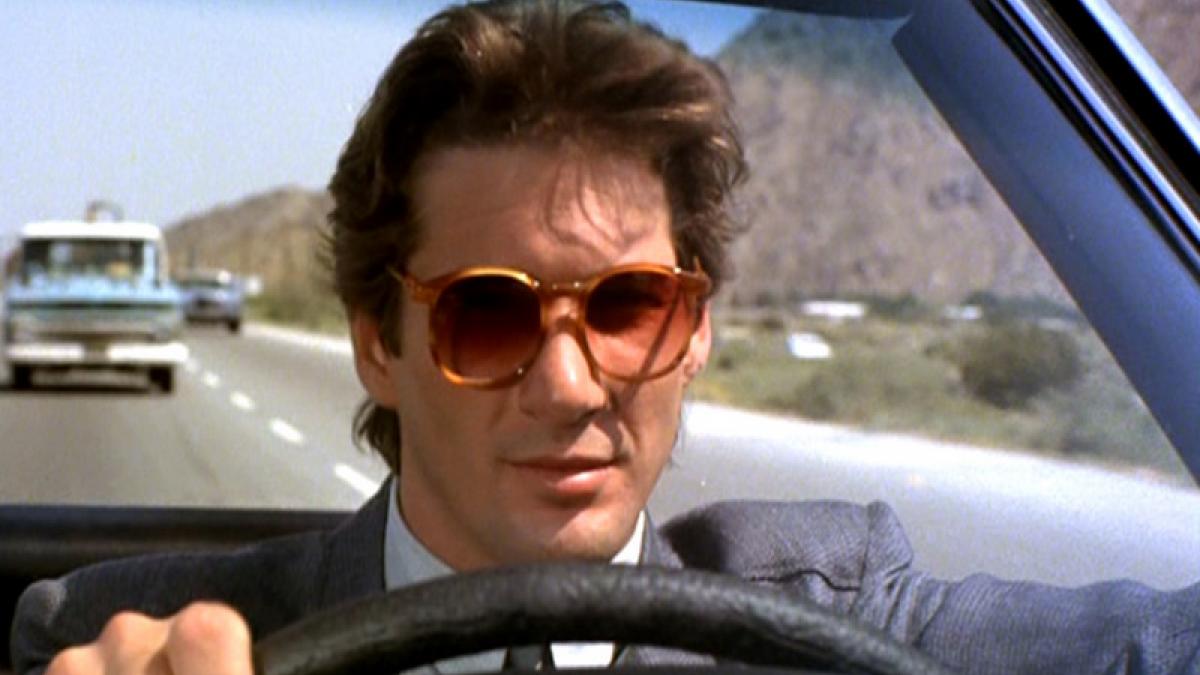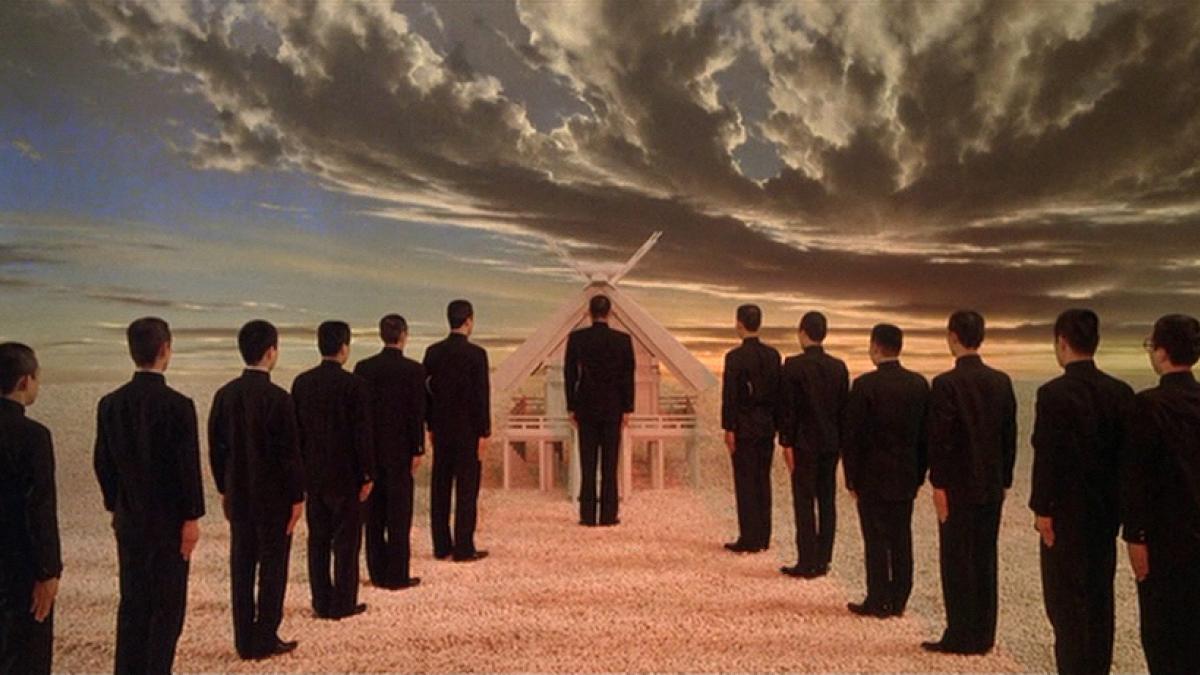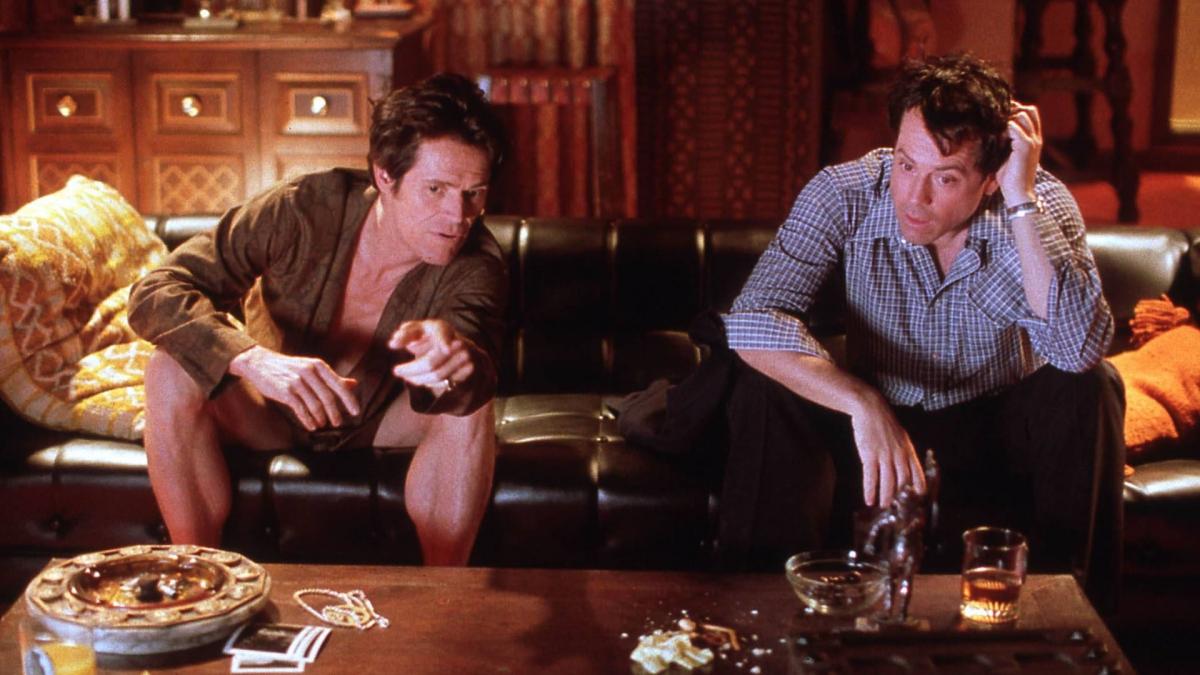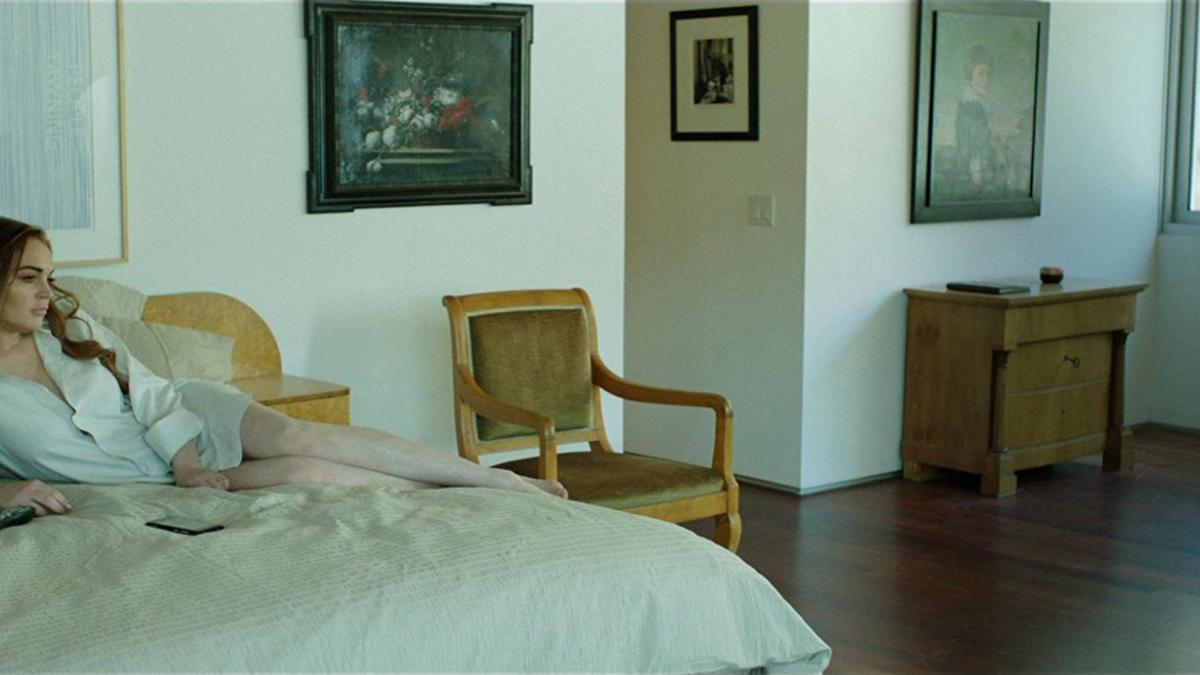[Photo: Zenith Entertainment]
There are many versions of Paul Schrader. He’s the screenwriter of Martin Scorsese’s great Taxi Driver (1976), Raging Bull (1980), and The Last Temptation of Christ (1988). He’s also a film academic, the author of Transcendental Style in Film (1972) and scholarly articles such as the much-studied “Notes on Film Noir” (1972). Too often, however, Schrader the filmmaker is overlooked. His directorial output includes 20 feature films spanning 1978’s Blue Collar to 2018’s First Reformed. His artistic reputation throughout those decades has waxed and waned, from hitmaker (American Gigolo [1980]), to award-winner (Mishima: A Life in Four Chapters [1984]), to cultural pariah (The Canyons [2013]).
Schrader’s latest film, First Reformed, premiered on the fall festival circuit of 2017, garnering acclaim from critics such as the New York Times’ A.O. Scott, who said it “feels like a fresh discovery … more than that: an epiphany.” (Our critic here at the Lens was just as enthusiastic as Scott.) The film is the story of a priest whose faith is challenged by a litany of corporate, cultural, and environmental forces, as well as by his own emotional and physical ailments. It’s very much the contemporary version of Robert Bresson’s Diary of a Country Priest (1951), featuring a diary-as-narration conceit and presented in the boxy Academy ratio. The films of that “patron saint of cinema” and those by Carl Th. Dreyer and Ozu Yasujiro formed the basis of Transcendental Style. These three artists created their own recognizable cinematic languages and, along with masters Alfred Hitchcock and Ingmar Bergman, serve as influences throughout Schrader's work — including First Reformed. In some ways, this new film is the feature that Schrader has been working toward for 40 years. It is a compendium of the obsessions he shares with his forebears: questions of faith in a faithless world; criminals and their morality; the limits of desire; isolated figures in existential crises; and how the apparatus of cinema can explore these ideas.
First Reformed, which opened locally this past weekend at Landmark’s Plaza Frontenac Cinema and Tivoli Theatre, is proving to be among the most talked-about films of the year. Before seeing the filmmaker’s latest work, viewers are invited to familiarize (or re-familiarize) themselves with some of Schrader’s other noteworthy features.

Other than his scripts for Taxi Driver and Raging Bull, Schrader’s third directorial effort is probably his most well-known work. The film takes Bresson’s Pickpocket (1959) and updates its narrative of a habitual criminal for a “Me Generation” milieu of post-disco, pre-Reagan 1980 Los Angeles. Richard Gere plays the titular character, a high-class sex worker with a penchant for older affluent women who afford him an opulent lifestyle, complete with his arsenal of Giorgio Armani suits. These become costumes for the man whose profession dictates he perform certain roles for his clients, and Gere uses his uncommon good looks and swoon-inducing charm to full effect in his breakout performance.
Gigolo would prove to be a coup for both Armani and its original song, “Call Me,” performed by Blondie and produced and written by the film’s composer, electronic-music mastermind Giorgio Moroder. Although the fashion and lifestyle featured in the film would be influential among the economic elite in the coming decade, Schrader’s film is nothing if not critical of American capitalist culture, masculinity, misogyny, and queer panic. The aesthetic of the spare yet gaudy interiors of the LA locations are as enticing and inviting as the roving camera that mirrors its protagonist’s seductive ways. Similar to Scorsese’s 2013 celebration-cum-condemnation The Wolf of Wall Street, the film indicts the audience’s yearning for a similar lifestyle. When the film noir plot kicks in and Gere’s Julian finds himself framed for a murder, Schrader lifts a line directly from the noir masterpiece Out of the Past (1948). Similar to Robert Mitchum’s reformed bad guy from that film, Julian’s past manipulations and schemes start to catch up with him in the worst ways.
The only saving grace for Julian is a California senator’s wife, Michelle Stratton (a luminous Lauren Hutton), whose boredom turns into a magnetic attraction to Gere’s unattainable paid companion. Her desire for Julian is alternately rebuffed and realized by him, until her support turns into devotion in the film’s gorgeous elliptical ending, wherein acts of self-sacrifice awaken Julian to the possibilities of good in humanity. The last shot is a direct reference to Pickpocket’s final moment, but unlike some cribs in his future films, this one feels wholly earned.
Rating: B+ [Now available to stream on MAX GO and for rent or purchase on Amazon, iTunes, and other platforms.]

The novelist, playwright, model, actor, and film director Mishima Yukio committed seppuku in July 1970 in front of members of his private militia and Gen. Masuda of the Japanese Self-Defense Forces. Mishima, born Hiraoka Kimitake, conflated nationalism with faith and aesthetics with ethics, providing perfect fodder for Schrader, who had explored similar territory in Transcendental Style in Film. The Japanese iconoclast had an unwavering sense of cultural obligation born of his repressed homosexuality and obsessive compulsions, seemingly disparate psychological splinters that Schrader and his co-writer, brother Leonard Schrader, deftly balance as parts of one whole. Mishima is another in the long line of Schrader lone wolves like Travis Bickle in Taxi Driver and the Rev. Toller in First Reformed, men wading through the swampy waters of morality and obsessive neuroses, predestined to violent ends.
The film is refracted through Mishima’s art and memories as Schrader shows how his life informed his work and vice versa. The framing device is the coup d'etat that would be the ultimate end of Mishima’s life, filmed as a modern political thriller. Within those scenes are the four chapters – “Beauty,” “Art,” “Action,” and “Harmony of Pen and Sword” – composed of flashbacks that mimic neon-colored realizations of three of Mishima’s literary works and the Japanese Golden Era films of Ozu and Mizoguchi. It may seem like a convoluted structure, but the conceit makes for a far more fully realized biopic than such later true-life Schrader films Patty Hearst (1988) and Auto-Focus (2002). Although kin to Welles’ Citizen Kane (1941), which constructs a portrait of its William Randolph Hearst-inspired central character via the memories of former friends and flings, Schrader’s film is built around the narratives Mishima himself created for public consumption.
Mishima is also a work of cinematic bravura, a film by a director utilizing every aspect of the medium to inspire awe. Everyone involved with the film is firing on all cylinders: minimalist composer Philip Glass’ maximalist score; John Bailey’s versatile lensing; Sasaki’s Kyoji’s set decoration, inspired by equal parts Brecht, Noh, and Douglas Sirk. It’s an exhilarating experience that by every right should be impenetrable, but every sweeping camera movement and perfectly calibrated cut keeps the audience barrelling toward an that can be viewed as tragic or transcendent, given that Schrader leaves the conclusion appropriately ambiguous. Unfortunately still too underseen, this is Schrader’s masterpiece and one that deserves to be mentioned alongside cinema’s all-time greats.
Rating: A [Now available to stream on FilmStruck and for rent or purchase on iTunes and other platforms.]

Last year Willem Dafoe garnered raves (and an Oscar nomination) for his sensitive portrayal of Bobby, the manager of a run-down extended-stay motel in Sean Baker’s The Florida Project. The performance was lauded as a change of pace for a performer who’s known for more volatile work like the villains in David Lynch’s Wild at Heart (1991) and Sam Raimi’s Spider-Man (2002). However, shades of Bobby's pathos can be found in his John LeTour from Schrader’s Light Sleeper. John is the perfect role for Dafoe, whose prominent facial structure betrays a world-weariness even as his baby blues illuminate a lust for life. His character is a recovering addict still peddling dope to various clients across New York City’s boroughs, making rounds among his parishioners like the eponymous country priest in Bresson’s 1951 film. It’s also a film noir world with an interconnected network of low-lifes, social climbers, and complicit officials who – ignorant of the man’s quest for self-actualization that manifests itself in his insomnia-filled nights – all use and abuse John. No rest for the wicked, indeed.
Schrader considers this film his bookend to Taxi Driver and a kind of companion to Gigolo, and the morally bankrupt worlds of those two films are depicted here as a post-“Greed is Good” landscape of entrepreneurial criminals all but drowning in the garbage bag-lined streets of NYC. The film pits capitalism and spiritualism against each other in both the background and foreground. The seemingly omniscient figures in the art decorating the interiors of Sleeper don’t look with judgment but act as another guiding force, much like the psychic John sees. She’s played by the inimitable Mary Beth Hurt, who’s joined by Susan Sarandon, Victor Garber, Dana Delany, Jane Adams, and other underrated performers who help realize Schrader’s fusion of Pickpocket and Pickup on South Street (1953).
Rating: B [Now available to rent or purchase on iTunes and other platforms.]

If American Gigolo had a complicated view of sex as an act of deep personal connection and power manipulation, Schrader’s Auto Focus sees it only as a drug that causes his protagonist’s rapid downward spiral. The film tells the story of Hogan’s Heroes (1965-71) star Bob Crane (Greg Kinnear), his tech-wizard “friend” John Carpenter (Willem Dafoe, more skeezy and gnarly here than in the former film), and their increasingly dangerous habit of videotaping their sexual activities with unaware women. The director evinces a much more moralistic viewpoint here, rather than the more open ambiguity of his previous work, choosing to show the crimes of its broken central figure without much exploration of his interiority. For all its failings as a portrait of addiction, it is much more knowing about the cultural and technological changes that allowed cinema to expand its vision for more nefarious use (as Schrader has it).
Auto Focus chronicles cinema’s changing tides by adopting popular contemporary aesthetics that reflect its story’s myriad eras. Its unreliable narrator, the gee-whiz Crane (Kinnear is at a career-best here), opens the film over the mid-century popular American cinema look of his colorfully decorated family home. These scenes feel like the work of Douglas Sirk, complete with angst simmering beneath their candy-coated surfaces. Eventually, the film adopts further styles – for example, the grit and grime of early-1970s “New American” cinema, as Crane’s predilection for self-exposure and extramarital sex is gradually revealed in the film. His perversions are fully exposed to the audience as Auto-Focus lurches into full horror-movie aesthetic in a final violent act that ends Crane’s life. The murder of Crane by Carpenter’s video-camera tripod is as blunt a symbol as can be found in any of Schrader’s films – an obvious punctuation mark to an already condemning sentence.
Rating: C+ [Now available to rent or purchase on iTunes and other platforms.]

Who knew that after a long career dealing in transcendence via the cinema of Bergman, Ozu, and Bresson that Schrader would turn to MTV’s reality show The Hills for inspiration? Condemnation may be a more appropriate term, and that jumping-off point could be just from the mind of its screenwriter, Mr. Chic Modern Nihilism himself, Bret Easton Ellis (Less than Zero, American Psycho). The film plays as a series of forced meetings between members of a group of grade-Z young-Hollywood types, much like the structure of any given episode of reality television. But while The Hills is more a product of aspiration for a certain segment of its audience, The Canyons deals with the dregs of humanity, blaming fame and social media as the death knell for contemporary society and cinema. If the thematization of these ideas isn’t sufficient in the film proper, the stills of abandoned movie houses interspersed throughout the The Canyons make it clear. FIN DE CINEMA.
All of this might be more dynamic fodder for a film if it weren’t for the paper-thin script. The plot consists of a series of manipulations by trust-fund bad boy Christian (porn star James Deen), concluding in a gruesome murder that reveals just how far his antisocial behavior can stretch. His girlfriend is Tara, a former star portrayed by a fallen-from-grace Lindsay Lohan, who shifts from apparent boredom with the material to raw-nerve emotionality. Deen and Lohan’s last scene together is a revelation for the former Disney star, but considered moment to moment, The Canyons is mostly just dead air. Coupled with its extratextual behind-the-scenes drama – the film was crowd-funded through Kickstarter, Lohan and Deen’s casting was decried as a stunt, and a New York Times chronicle of it exposed the interpersonal issues between Schrader, his stars, and producers – the film can be seen as a multimedia work worthy of study as a portrait of its era. It’s too bad it’s mostly boring.
Rating: C- [Now available to stream on Netflix and Hulu and for rent or purchase on Amazon and other platforms.]


